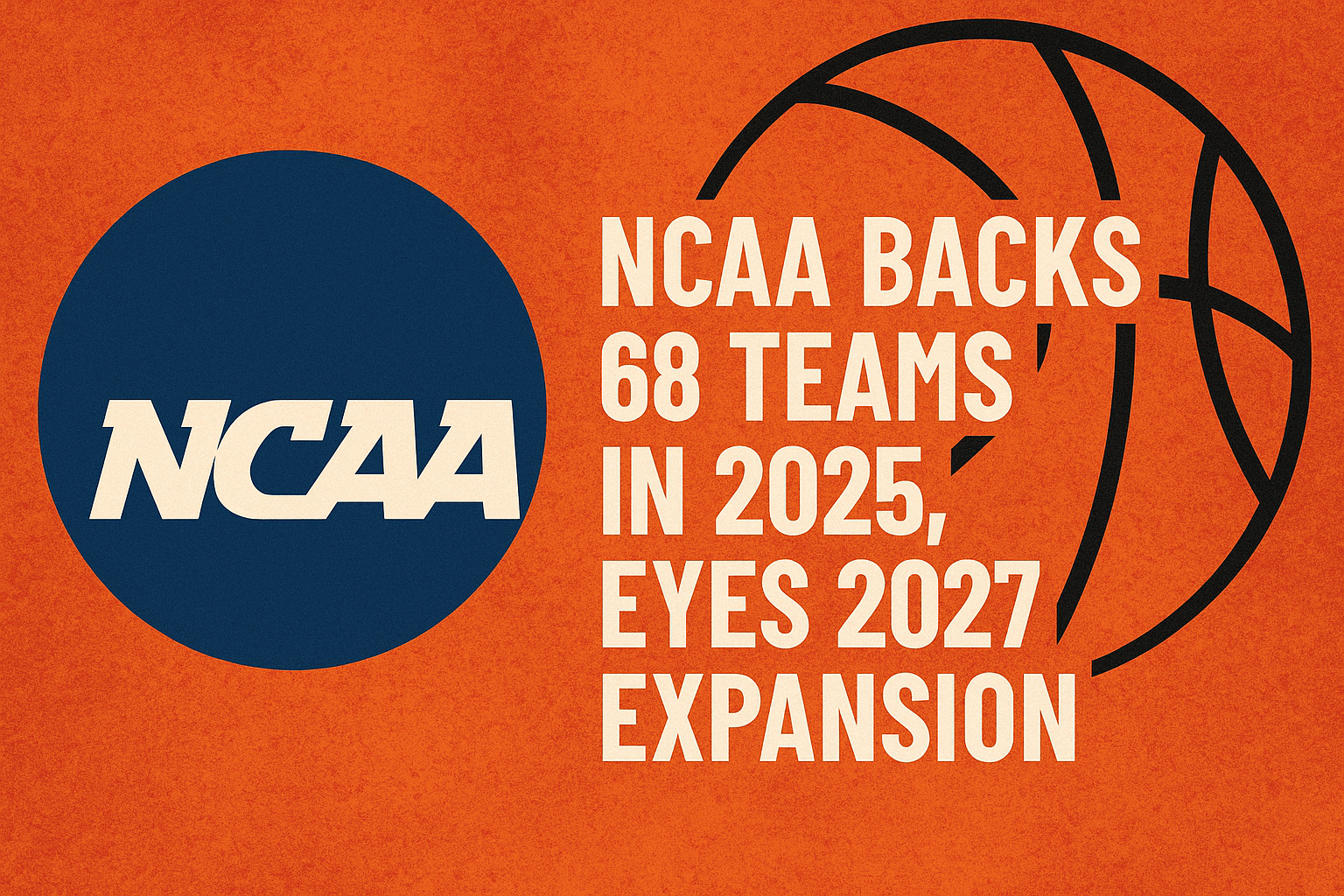NCAA Backs 68 Teams in 2025: Expansion Deferred, Future Talks Continue
August 5, 2025 — The NCAA has officially decided to maintain its current 68-team format for both the men’s and women’s basketball tournaments in 2025 and 2026. While many speculated that expansion might be imminent, the NCAA has confirmed that NCAA Backs 68 Teams in 2025, putting an end to any immediate changes for the upcoming seasons. However, discussions about potential expansion are far from over.
NCAA Senior Vice President of Basketball Dan Gavitt issued a statement on Monday clarifying the organization’s position. “Expanding the tournament fields is no longer being contemplated for the 2026 men’s and women’s basketball championships,” he stated. “However, the committees will continue conversations on whether to recommend expanding to 72 or 76 teams in advance of the 2027 championships.”
This means that while NCAA Backs 68 Teams in 2025, there is still a strong possibility of future growth as early as 2027. The NCAA is carefully weighing the pros and cons of expansion, and the topic remains active among stakeholders.
Financial and Broadcast Considerations
NCAA President Charlie Baker emphasized that expanding the tournament could add significant value, particularly from a financial and broadcasting perspective. Baker noted that the NCAA has already had promising discussions with their television partners CBS and Warner Bros. Discovery, whose broadcasting deal runs through 2032 and is worth approximately $1.1 billion annually.
“We have had good conversations with our TV partners,” Baker stated. “If done right, expansion could enhance the tournament’s value for everyone involved.”
NCAA Backs 68 Teams in 2025, but it’s clear that financial incentives could play a key role in shaping future decisions.
Historical Context: The 68-Team Format
The current 68-team format was introduced in 2011, evolving from the long-standing 64-team bracket. The additional four teams created what is now known as the “First Four,” a set of play-in games featuring the four lowest-seeded at-large teams and the four lowest-seeded conference champions. Winners of these games earn the final spots in the traditional 64-team bracket.
The move to 68 teams aimed to provide greater opportunity for deserving programs while adding excitement to the early stages of the tournament. With NCAA Backs 68 Teams in 2025, that same format will remain in place for at least two more seasons.
The Debate Over Expansion
The idea of expanding to 72 or 76 teams is rooted in the belief that some of the best teams in the country are being left out under the current system. Baker explained, “If you have a tournament that’s got 64 or 68 teams in it, you’re going to have a bunch of teams that are probably among what most people would consider to be the best 68 or 70 teams in the country that aren’t going to make the tournament, period.”
He added, “The point behind going from 68 to 72 or 76 is to basically give some of those schools that were probably among the 72, 76, 68, 64 best teams in the country a way into the tournament.”
While NCAA Backs 68 Teams in 2025, officials believe that expanding access to the tournament would promote fairness and provide more opportunities to worthy programs.
Coaches and Commissioners Speak Out
The potential for expansion has drawn mixed reactions from college basketball coaches and conference commissioners.
Coaches like Tom Izzo, Nate Oats, and Dan Hurley have expressed satisfaction with the current 68-team setup. However, Texas coach Sean Miller has a different view. Speaking to CBS Sports, Miller said, “Never before has the tournament felt more even, with few exceptions. On any given night in a 40-minute game, it’s just amazing what can happen. I think adding depth to that will only make what’s already good even better.”
SEC Commissioner Greg Sankey also supports the idea of expansion but stresses the need for careful planning. “You just don’t jump into it,” Sankey said. “If there are reasons from a broadcast point, a financial point, logistics point, or competitive realities that don’t support expansion, again, we’re going to be fine. But I think this is the right direction to at least explore.”
Kansas coach Bill Self added that coaches within the Big 12 generally support expansion. “There was a little bit that was brought forth and the consensus among the coaches, even though it was very little, would be in favor of that,” Self said. “I don’t know if you could make it where it was totally equitable all the way across the board for everybody.”
The Road Ahead: 2027 and Beyond
While NCAA Backs 68 Teams in 2025, the door remains open for future changes. The committees overseeing the tournaments will continue their evaluation and are expected to make recommendations for the 2027 championships.
The considerations go beyond just fairness and competitiveness. Logistical challenges, including venue availability, travel schedules, and broadcasting slots, all play a role in the decision-making process.
Nevertheless, the momentum for expansion seems to be building. With continued support from influential coaches and commissioners, along with potential financial gains, an expanded tournament in 2027 is increasingly likely.
Conclusion: NCAA Backs 68 Teams in 2025, Future Still Bright
In conclusion, NCAA Backs 68 Teams in 2025, maintaining a format that has delivered exciting basketball for over a decade. While the status quo remains for now, the ongoing discussions and planning indicate that change is on the horizon.
The decision to hold at 68 teams offers stability for the next two seasons, allowing the NCAA and its partners to prepare thoughtfully for a possible expansion. For fans, players, and coaches, the focus remains on the upcoming tournament season. But behind the scenes, the groundwork for a larger, more inclusive NCAA Tournament in 2027 is already being laid.
As the basketball world anticipates another thrilling season, one thing is certain: NCAA Backs 68 Teams in 2025, but the future may hold even more opportunities for teams across the nation.

One thought on “NCAA Backs 68 Teams in 2025, Plans Future Growth”
Comments are closed.